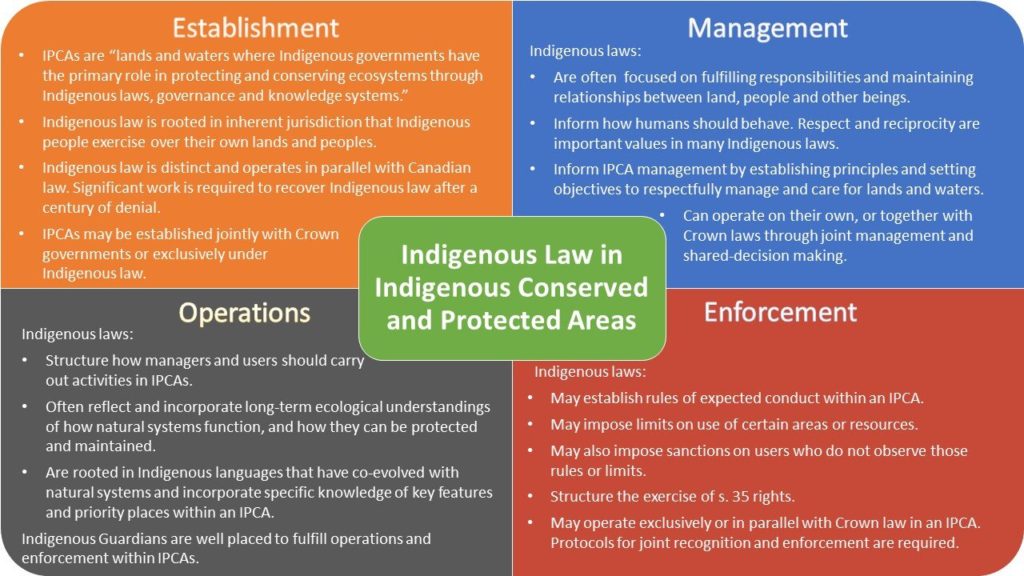To successfully build Nation-to-Nation and Crown-to-Inuit relationships that recognize and reconcile Crown and Indigenous jurisdictions and authorities, Indigenous Protected and Conserved Areas (IPCAs) governance arrangements must find ways to bring together Indigenous and Crown legal systems. This report examines SGaan Kinghlas-Bowie Seamount Marine Protected Area in Haida Gwaii and Thaidene Nëné in Łutsël K’é Dene First Nation territory as two contemporary examples of how Indigenous laws operate alongside Crown laws within IPCAs.
The report makes recommendations for how mutual recognition of Indigenous and Crown jurisdictions throughout the establishment, management and operation of IPCAs can advance effective conservation and provide a pathway for reconciliation. The report finds that IPCAs offer clear and compelling benefits for both Indigenous and Crown governments that go well beyond conservation. As the case studies demonstrate, the integration of Indigenous law and shared decision-making within IPCAs substantially reduces conflicts and fosters relationships that advance mutual learning and more effective decision-making in the face of present and future challenges.
Prepared by: Larry Innes, Georgia Lloyd-Smith (West Coast Environmental Law), Conservation through Reconciliation Partnership (University of Guelph).
With contributions from: Tara Rose McDonald, J.D. Candidate (University of Ottawa Faculty of Law), Patricia Lopez Kalalo, J.D. Candidate (University of Victoria Faculty of Law),Sarah Jackson, J.D. (University of Victoria Faculty of Law, Transform Research),Professor Deborah Curran(Environmental Law Centre at the University of Victoria).
Click here to download the full report

The content on this page was first posted as a resource by Conservation through Reconciliation Partnership.
Related Posts

Respect and Responsibility: Integrating Indigenous Rights and Private Land Conservation in Canada
This post contains the executive summary of a new report, Respect and Responsibility: Integrating Indigenous Rights and Private Conservation in Canada.
To download the full report, please click here.
To…
Read More...
OKT proud to work alongside Inuvialuit on their landmark child and family services law
November 25, 2021; updated November 26, 2021
“For the first time in modern history, the Inuvialuit have passed a law for the Inuvialuit.” (NNSL Media, Nov. 24, 2021)
It’s…
Read More...
The Force and Inherent Jurisdiction and Why the Empire and Indigenous Peoples need to resist the Dark Side
For many Indigenous peoples, Grogu, aka “Baby Yoda” has captivated our imaginations. Small, vulnerable, and very powerful, Grogu “is.” The Force is mystical and ceremonial and awakens our minds about…
Read More...
